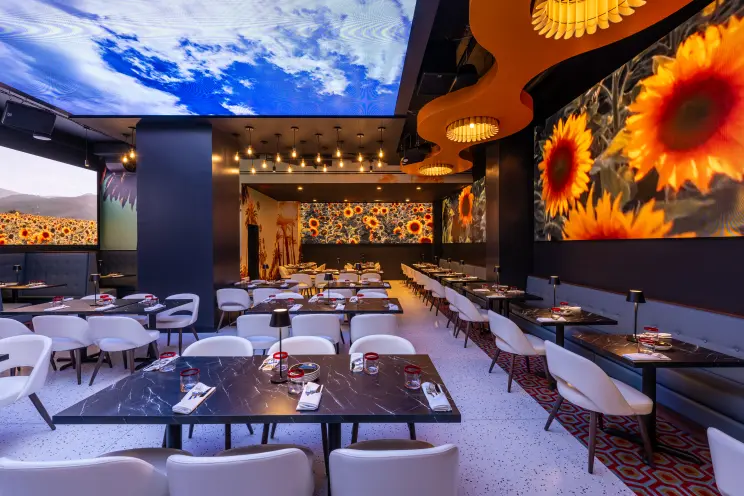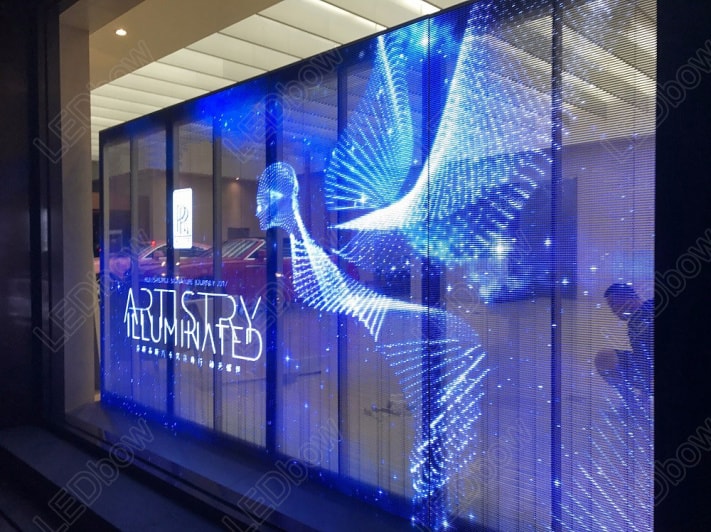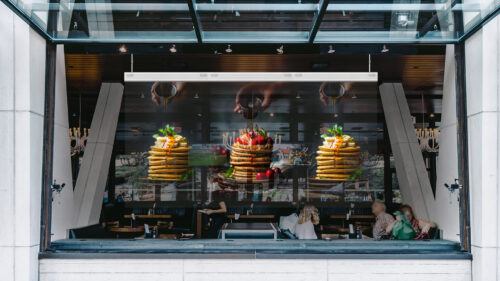

When it comes to digital signage, there’s more than just resolution and brightness to consider—lifespan matters. For any brand investing in transparent LED display technology, especially for high-traffic areas like storefronts, trade shows, or retail showrooms, knowing how long your display will last can be the difference between a smart investment and an expensive mistake.

Today, we’re comparing the lifespan of transparent LED displays and traditional LED panels—what affects their durability, how usage environments play a role, and what you can expect from your screen over the long haul.

LED displays, whether transparent or traditional, don’t “burn out” like older screens. Instead, their brightness gradually fades over time. The industry standard for a high-quality LED display is 50,000 to 100,000 hours of active use before brightness dips below optimal viewing levels. But here’s where it gets interesting: transparent LED displays often outperform traditional displays in very specific environments—not just in aesthetics, but in lifespan and efficiency.

One of the core advantages of transparent displays lies in their design and construction. A transparent LED display is built with lighter, open-frame architecture, which allows for better heat dissipation. Less heat stress on components typically means longer-lasting performance.
And because they let ambient light pass through, transparent displays are often used indoors or behind glass—think digital signage for storefront windows, see-through advertising screens, or interactive transparent displays for luxury retail digital signage. These placements shield the hardware from direct exposure to UV rays, humidity, and temperature fluctuations—three of the biggest enemies of LED longevity.
By comparison, traditional LED panels—especially when installed outdoors—are exposed to harsher environmental conditions. These require more intensive cooling, weatherproofing, and maintenance, which over time can reduce operational life or increase repair costs.
While traditional LED walls are built for visibility across long distances, transparent video walls and glass LED screens are designed for close-up, eye-level engagement in controlled spaces. This means less visual strain, fewer overheating issues, and lower power consumption over time.
If you’re considering display applications like:
…then a transparent LED screen may actually outlast a traditional display due to these environmental advantages.
Also, in environments like high-end boutiques or pop-ups, display downtime simply isn’t an option. A failing screen interrupts not just visuals, but the entire customer experience. That’s why many brands are shifting to transparent digital signage solutions—built for resilience as much as style.

Another area where transparent displays hold a quiet edge is in maintenance. Since they’re lighter and often modular, transparent screen installation and servicing are less labor-intensive. And because the display is less prone to dust accumulation and enclosed heat pockets, routine cleaning and component replacement are infrequent.
That doesn’t mean they’re maintenance-free—but in environments like transparent LED signage for malls, digital storefront screens, or transparent screens for showroom setups, they tend to run cooler and cleaner than traditional panels tucked inside aging enclosures.
Most transparent LED manufacturers rate their displays at a similar lifespan to traditional LEDs—usually 75,000 hours under optimal conditions. But the big difference is that transparent displays often remain within peak performance for longer, thanks to:
That means your retail window LED display, digital window screen, or transparent display monitor could easily offer 5–8 years of strong, reliable operation with minimal brightness loss—sometimes longer when used intermittently or in shaded environments.
For many brands, the answer is yes—especially when ROI is tied not just to visibility, but to aesthetic continuity, operational reliability, and energy efficiency.
Let’s not forget the customer-facing advantage either. Whether you’re using a transparent OLED display to elevate a luxury store digital signage experience or installing an LED screen on glass at a high-end hotel entrance, you’re not just saving space—you’re telling a visual story without compromise.
At SeeThruDisplay, we’ve worked closely with clients who need digital signage that doesn’t just perform well today, but sustains brand excellence over time. From transparent screen rentals in Los Angeles to custom-size transparent screens for flagship installations, we’ve seen firsthand how these displays hold their own—year after year.
If you’re comparing based solely on raw brightness or budget, traditional displays may seem like the obvious choice. But if you weigh in environment, design, maintenance, and lifespan, the transparent LED display becomes a much more compelling option—especially for retail, hospitality, and exhibition spaces.
And as transparent technology continues to evolve—offering higher brightness, interactive touch capabilities, and ultra-thin LED panels—the performance gap between traditional and transparent is closing fast.
In fact, for many premium brands looking ahead to 2025 and beyond, transparent is the new standard.